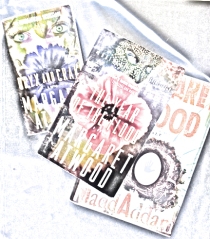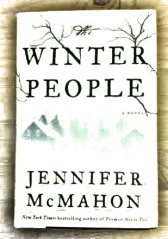It has been awhile since time has allowed me to be as engulfed in the Canada Reads process as I have been this year. I have read the 5 books, listened to the interviews of the authors with Shelagh Rogers, and participated in some of the Twitter discussions. Canada Reads has even made trailers for each of the books, which I found fascinating to see how they summarize these narratives. Check them out here: http://www.cbc.ca/books/canadareads/2014/02/watch-canada-reads-book-trailers.html
And I am ready to announce my opinion on who should be the winner of Canada Reads 2014 (just in case anyone is interested). But first I want to address why I think Canada Reads is important. Canada Reads creates discussion about books, but its themes, like this year’s question “One Novel to Change Our Nation”, opens up conversations about the issues raised by these books. In Rawi Hage’s interview with Shelagh Rogers on The Next Chapter in early February, he revealed that he thought this question was “the silliest question and I protested against it. I don’t think one book can save a nation”. I agree with the sentiment that it is silly to think one book can save a nation, but (sorry to disagree with you yet again, Rawi) I think the conversations that one book generates can change the perspective of people throughout Canada. And I think that is where the power of Canada Reads and the question of “what book can change our nation” becomes simply more than another literary marketing tool. Because of these books, we have people discussing issues like gender identity, Aboriginal social justice, environmental sustainability, immigration, and racism. Hopefully, these books will make us look differently at an issue because of the way the characters humanize that issue. And hopefully, the conversations raised by Canada Reads will cause people to talk about these issues differently and change their actions and attitudes regarding them. For example, I did not personally enjoy Rawi Hage’s book “Cockroach” but I appreciated the Twitter discussion from a few weeks ago. People’s comments made me look at his book differently by appreciating his character’s narrative more and seeing a point for the narrative. I realized that it wasn’t just a book from a crazy man’s perspective but also a story of a new immigrant in darkness slipping through the cracks in a country that promised him more. These discussions made me look at the book differently but also made me think about the experiences that an immigrant faces in Canada.
And yet despite all the great discussions, beautiful writing, creative plot points, and the issues brought up by these novels, only one book can be chosen as Canada Reads 2014. And my choice for the one novel Canada should read to change our nation is…….”The Orenda” by Joseph Boyden!
I found Boyden’s storytelling of the First Nations and Canadian colonizers refreshing. He presented a gentle perspective that I have not read before even in such a well-known history lesson, and he created a new balance in a conflict that we are still trying to resolve today. And this balancing perspective is why Canada should read this book and why it may have the capacity to change our nation. The book revisits the old hurts that are still trying to heal; not to make us see the wounds or emphasize the pain they have caused, but to make us see the need to hear each other, legitimize our stories, make amends, and move forward together.
Even if Boyden’s book does not win, it has changed me. It has reminded me to listen not to judge, to validate the stories of others instead of trying to assert my own, and to reach out in friendship instead of making enemies.
Let the debates begin!
(Debates take place from March 3-6 on CBC Radio, CBC-TV, and stream online through CBC Books http://www.cbc.ca/books/canadareads/2013/11/meet-the-canada-reads-2014-contenders.html)



